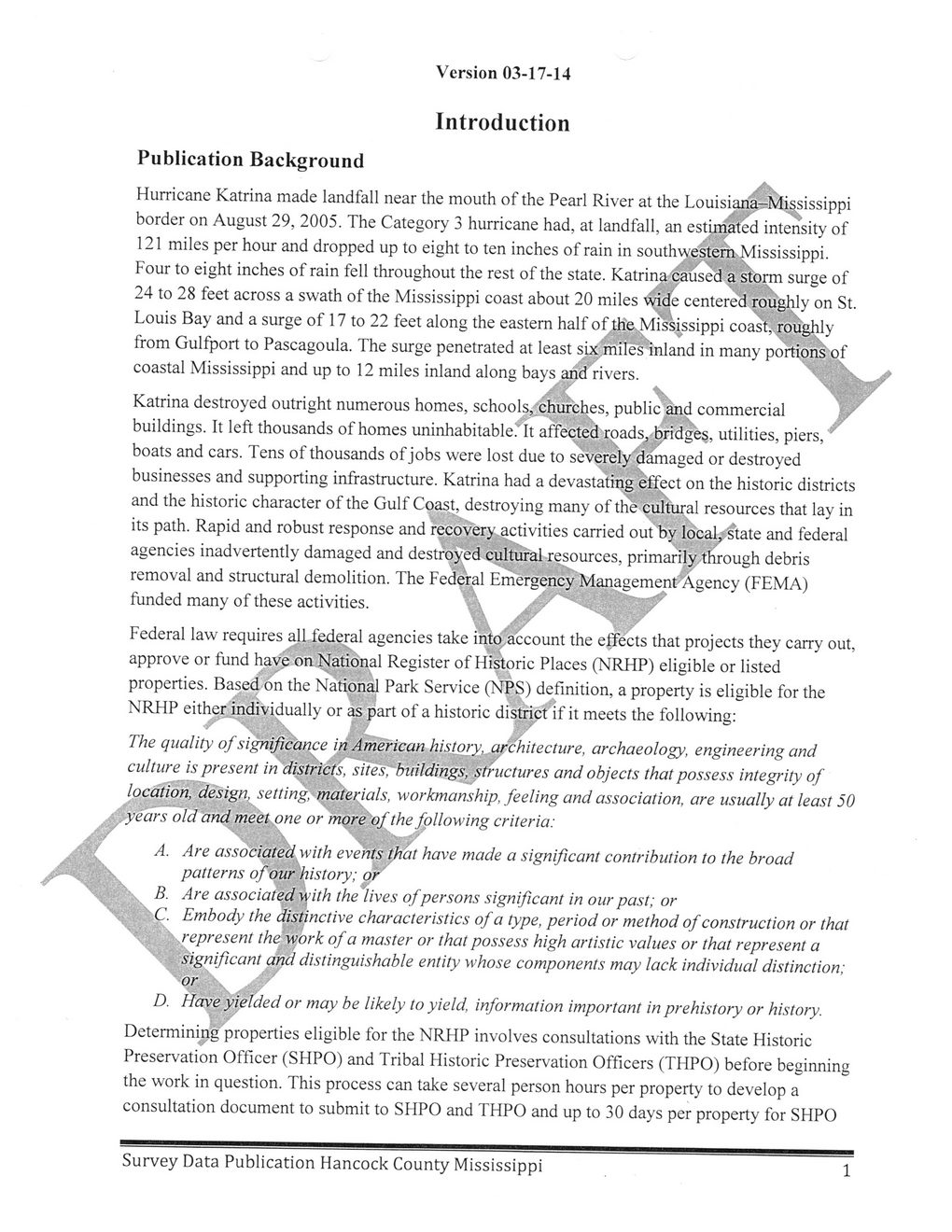This text was obtained via automated optical character recognition.
It has not been edited and may therefore contain several errors.
Version 03-17-14 Introduction Publication Background Hurricane Katrina made landfall near the mouth of the Pearl River at the Louisiana—Mississippi border on August 29, 2005. The Category 3 hurricane had, at landfall, an estimated intensity of 121 miles per hour and dropped up to eight to ten inches of rain in southwestern Mississippi. Four to eight inches of rain fell throughout the rest of the state. Katrina tausec! a storm surge of 24 to 28 feet across a swath of the Mississippi coast about 20 miles widfe centered roughly on St. Louis Bay and a surge of 17 to 22 feet along the eastern half of the..Mississippi coast,-roughly from Gulfport to Pascagoula. The surge penetrated at least six miles inland in many portions of coastal Mississippi and up to 12 miles inland along bays and rivers. Katrina destroyed outright numerous homes, schools, churches, public and commercial buildings. It left thousands of homes uninhabitable!'It affected roads, bridges, utilities, piers, ’ boats and cars. Tens of thousands of jobs were lost due to severely damaged or destroyed businesses and supporting infrastructure. Katrina had a devastating effect on the historic districts and the historic character of the Gulf Coast, destroying many of the cultural resources that lay in its path. Rapid and robust response and recovery activities carried out by local, state and federal agencies inadvertently damaged and destroyed cultural resources, primarily through debris removal and structural demolition. The Federal Emergency Management Agency (FEMA) funded many of these activities. \ Federal law requires all.federal agencies take into,account the effects that projects they carry out, approve or fund have on National Register of Historic Places (NRHP) eligible or listed properties. Based on the National Park Service (NFS) definition, a property is eligible for the NRHP either individually or as part of a historic district if it meets the following: The quality of significance in American history, architecture, archaeology, engineering and culture is present in district's, sites'? buildings, structures and objects that possess integrity of location, design, setting,^materials, workmanship, feeling and association, are usually at least 50 years old'and meet fine or more of the following criteria: A. Are associated with events that have made a significant contribution to the broad patterns of our history; or' B. Are associated with the lives of persons significant in our past; or C. Embody the distinctive characteristics of a type, period or method of construction or that represent the work of a master or that possess high artistic values or that represent a \ significant and distinguishable entity whose components may lack individual distinction; or D. Have yielded or may be likely to yield, information important in prehistory or history. Determining'properties eligible for the NRHP involves consultations with the State Historic Preservation Officer (SHPO) and Tribal Historic Preservation Officers (THPO) before beginning the work in question. This process can take several person hours per property to develop a consultation document to submit to SHPO and THPO and up to 30 days per property for SHPO Survey Data Publication Hancock County Mississippi 1

Hancock County History and Archeology Survey-Publication-Data-2014-(03)